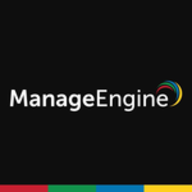

ManageEngine IT360 and Splunk Observability Cloud compete in IT operations management and observability. Splunk Observability Cloud emerges stronger due to its comprehensive features, although ManageEngine IT360 excels in pricing and support.
Features: ManageEngine IT360 includes network monitoring, IT service management, and application performance monitoring. Splunk Observability Cloud offers log management, real-time visibility, and advanced analytics, providing a range of observability tools and integration capabilities.
Room for Improvement: ManageEngine IT360 can enhance its advanced analytics, scale better for larger environments, and improve integration with third-party tools. Splunk Observability Cloud requires a less complex installation, needs to make analytics more user-friendly, and could benefit from more competitive pricing models.
Ease of Deployment and Customer Service: ManageEngine IT360 is known for easy deployment and responsive support, ensuring quick and smooth setups. Splunk Observability Cloud, while requiring significant setup configuration, provides extensive documentation and community resources.
Pricing and ROI: ManageEngine IT360 is cost-effective with competitive pricing that ensures quick ROI. Splunk Observability Cloud has higher initial costs due to advanced capabilities but delivers long-term value through extensive analytics and scalability.

With IT360 you will deliver services efficiently with maximum scalability. Service providers can now accurately manage the SLAs and release new services faster with features like Multi-tenancy, High Availability, Enterprise level systems and Datacenter monitoring, Remote site monitoring and Customer and site-specific dashboards.
Splunk Observability Cloud combines log search, data integration, and dashboards for seamless monitoring, enhancing infrastructure visibility and security. Its cloud integration and scalability support diverse environments, improving operational efficiency.
Splunk Observability Cloud offers comprehensive monitoring tools with user-friendly interfaces, enabling end-to-end infrastructure visibility. Its real-time alerting and predictive capabilities enhance security monitoring, while centralized dashboards provide cross-platform visibility. Users benefit from fast data integration and extensive insights into application performance. Despite its advantages, improvements could be made in integration with other tools, data reliability, scalability, and cost management. Users face challenges in configuration complexity and require better automation and endpoint protection features. Enhancing AI integration, alerts, and adaptation for high-throughput services could further improve usability.
What are the key features of Splunk Observability Cloud?In industries like finance and healthcare, Splunk Observability Cloud is implemented for application performance monitoring and infrastructure metrics. Its ability to track incidents and analyze machine data benefits network infrastructure, while distributed tracing and log analysis aid in tackling security threats. Organizations often integrate it for compliance and auditing purposes, enhancing visibility into network traffic and optimizing performance.
We monitor all IT Infrastructure Monitoring reviews to prevent fraudulent reviews and keep review quality high. We do not post reviews by company employees or direct competitors. We validate each review for authenticity via cross-reference with LinkedIn, and personal follow-up with the reviewer when necessary.